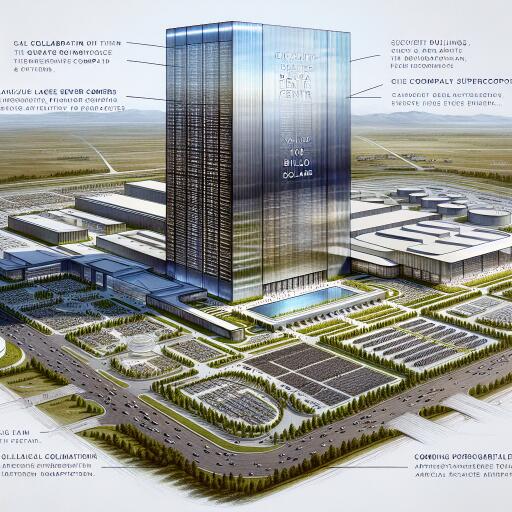Microsoft and OpenAI Embark on a Groundbreaking $100 Billion Data Centre Venture Featuring the Stargate AI Supercomputer
In a bold move that underscores the growing importance of artificial intelligence in our digital age, tech titan Microsoft, in collaboration with AI innovator OpenAI, has embarked on an ambitious venture to erect a data centre that might just set the tech world ablaze. With an estimated cost hovering around the $100 billion mark, this project is not just any data centre—it’s a venture that could redefine the future of AI technology and its infrastructure.
The centerpiece of this grand project is the Stargate AI supercomputer, a name that evokes images of star-spanning gateways and advanced technology. Slated for a 2028 launch, Stargate represents the apex of a series of supercomputers planned by the two companies. Its introduction marks a pivotal moment in the advancement of generative artificial intelligence technology—a field experiencing an exponential increase in demand due to its potential to outperform traditional computing systems in complex tasks.
Financially, Microsoft appears poised to shoulder the brunt of the staggering costs associated with this project. With initial estimates indicating an expenditure that dwarfs the budget of most existing data centres by a factor of 100, the magnitude of this investment underscores the critical role of AI in shaping future technological landscapes.
As per reports, the projected $100 billion investment is not a figure plucked from thin air but is grounded in discussions and preliminary cost analyses. Yet, it’s more than just building supercomputers; it’s about preparing for the next leap in AI capabilities. This preparation involves harnessing the power of AI chips, which are currently the jewels in the crown of AI hardware due to their high demand and significant costs. Notably, Nvidia’s CEO recently revealed the price range for their latest AI chip, highlighting the premium on these crucial components.
Microsoft, no stranger to innovation in AI hardware, had previously announced the development of custom computing chips. This new venture, however, is set to broaden the scope by integrating chips from a variety of suppliers, thereby encapsulating a more inclusive approach toward advancing AI technology.
The phases leading up to the Stargate supercomputer are a testament to a meticulous planning process. Currently, Microsoft and OpenAI are in the midst of executing the third phase of their comprehensive five-phase strategy. This phase prioritizes the acquisition of AI chips, which are instrumental in the development of AI systems capable of pushing the boundaries of what is technologically possible.
Speaking on the venture, a Microsoft spokesperson articulated the company’s forward-looking vision, stating their commitment to continually explore and invest in next-generation infrastructure innovations. This relentless pursuit of advancement is aimed at propelling AI capabilities into uncharted territories.
Yet, embracing such an ambitious goal is not without its financial implications. The cost of realizing this vision could potentially balloon to over $115 billion, a figure that vastly exceeds Microsoft’s previous capital expenditures on servers, buildings, and other infrastructural components.
This monumental project, steeped in both financial and technological ambition, represents a leap towards an AI-driven future. As Microsoft and OpenAI join forces to bring the Stargate supercomputer and its subsequent infrastructure to life, the very fabric of data processing, and by extension, our digital world, stands on the brink of a transformative era.









